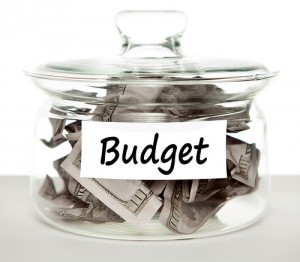What goes into the budget?
Now that we have a clear understanding why creating a budget is important, it is now time to start creating our first budget. It is not as complicated as it seems, but it will play a monumental role in bettering your financial situation.
So, what goes in the budget?

By: Tax Credits
Everything. Literally everything you plan to spend during that month goes into the budget. A budget simply involves you listing how much money you expect to have during a particular period and then predicting how much money you will need to spend during that time to live.
I tend to divide my budget into two major categories and then I create a bunch of sub categories below that.
Fixed Expenses
This category is reserved for my bills. Fixed expenses includes those items whose prices usually don’t change much from month to month. This would include things such as:
- Rent/Mortgage
- Insurance (Auto, Home, Life, etc.)
- Utilities
- Cable
- Phone
- Giving
- Gym Membership
- Recurring Internet Services (i.e. Evernote)
Variable Expenses
This category includes items whose costs are likely to change from month to month. The amount of groceries you buy may be different one month because you’re going to be out of town for a week. You may have a car maintenance/repair that is due one month and not the other. You may purchase your Christmas travel plane ticket in October. And the beat goes on…
Here are some of the items I include in my variable expenses category:
- Groceries
- Personal Care Items
- Household Items (Cleaners, Furniture, Home Improvement, etc.)
- Auto Maintenance/Repair
- Restaurant/Entertainment
- Books/Music/DVDs
- Toll Road Fees
- Medical (co-pays, deductibles, prescriptions)
- Other items that could vary from month to month such as gifts, membership dues for organizations, additional giving, etc.
So, how do I get started?
In order to make this as simple as possible, I am going to suggest that you start doing this on paper first. If you’re comfortable with technology, you can go ahead and create a spreadsheet or use any of the financial software or web tools that I will discuss at a later time.
Here are some simple steps to get started:
- On the left side of your paper, list all of the income you expect to receive in the next month.
- On the right side of the paper, list all of your anticipated expenses by category. If you are unaware of how much you spend on certain items such as groceries, gas, etc., you will need to make your best estimate.
- Subtract your expenses from your income.
- If the answer is a positive number (greater than zero), you have a budget surplus. That money can be used to make extra debt payments or to beef up your savings.
- If the answer is a negative number (less than zero), you have budget deficit. You will need to adjust some of your expenses to make it 0 or a positive number.
Like I mentioned earlier, we are keeping things simple for now so that you have no barriers to getting started. In the future, I will show you other techniques that you can use to create a budget and even provide sample forms that you can print each month or edit on your computer.
Question: Was creating a budget this way simple or difficult? Why?



